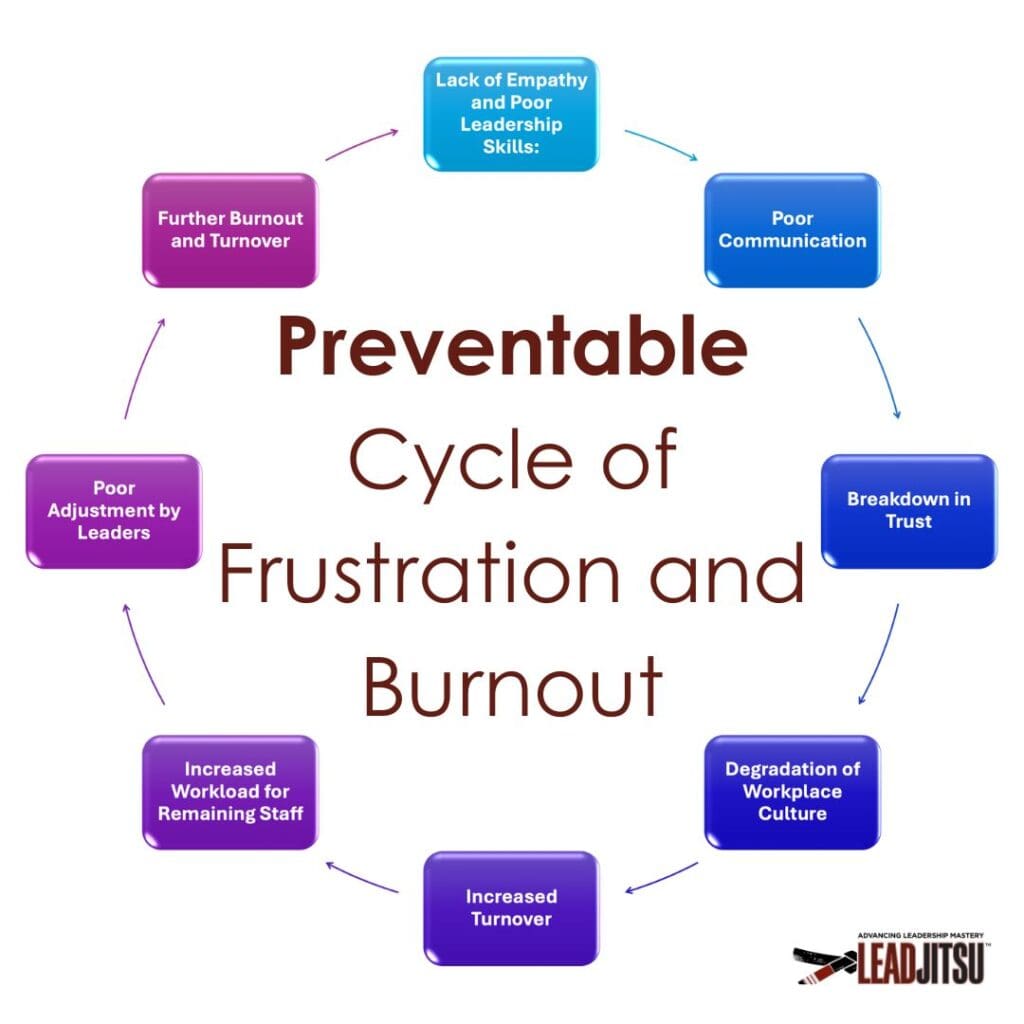Recognition is the first step.
Ineffective leadership is a significant yet often overlooked root of employee burnout and high turnover rates. No one wants to acknowledge that their leadership team is not performing up to standard. The typical response asks, “What can we do to get employees to improve?”
This bypasses the critical role leaders play in how employees perform. It’s a cycle that holds profitability and visions hostage.
The cycle typically goes like this:

Lack of Empathy and Poor Leadership Skills ❤️ : When leaders fail to demonstrate empathy and adequate leadership capabilities, they set the stage for deeper workplace issues. Empathy is crucial in understanding and addressing employees’ needs and concerns. Without it, leaders struggle to form genuine connections with their teams.
Poor Communication 🗣 : Poor communication, resulting from inadequate leadership, exacerbates workplace tensions. Employees feel undervalued and misunderstood, which can demoralize the team and stifle productivity.
Breakdown in Trust ❌: Effective communication is the bedrock of trust within a team. When communication falters, mistrust begins to take root. This can lead to skepticism regarding leadership decisions and doubts about the organization’s commitment to its employees.
Degradation of Workplace Culture ⤵️ : As trust erodes, the overall culture within the workplace suffers. A negative environment can emerge, characterized by cynicism, reduced collaboration, and a lack of engagement.
Increased Turnover 📈 : An unsupportive and negative culture leads many employees to leave for better opportunities. High turnover disrupts operations and places additional strain on the remaining staff.
Increased Workload for Remaining Staff 😧 : Those who stay are often required to take on extra duties to compensate for the reduced workforce, leading to overwork and stress.
Poor Adjustment by Leaders 🤯: Instead of adapting their strategies or improving their skills, poorly equipped leaders might double down on their existing methods, which only exacerbates the problems.
Further Burnout and Turnover 😡: This sustained pressure can lead to burnout among the remaining staff, perpetuating the cycle of turnover and initiating new challenges for the organization.
Breaking the Cycle 🌀
Organizations can break this cycle by investing in leadership development, emphasizing empathy, effective communication, and trust-building.
Fostering a culture that values feedback, supports work-life balance, and recognizes employee contributions can help mitigate burnout and improve retention.
This is not just a “poor leadership” problem. A title doesn’t make leaders great; this cycle occurs when we do not value developing our people.
Agree?
Let’s talk if your team is looking for ways to engage and develop your leaders, improve culture, and reduce turnover.
